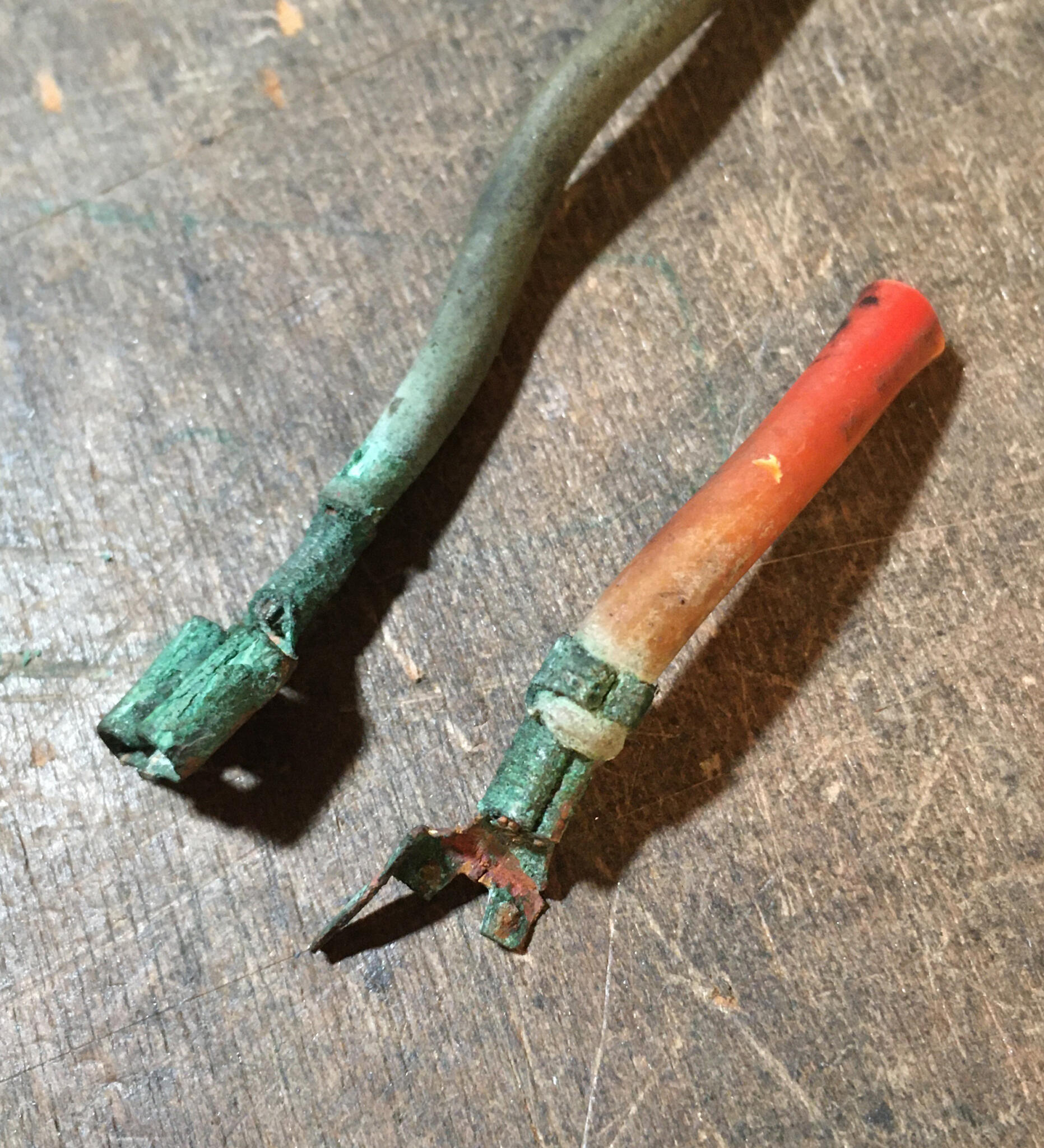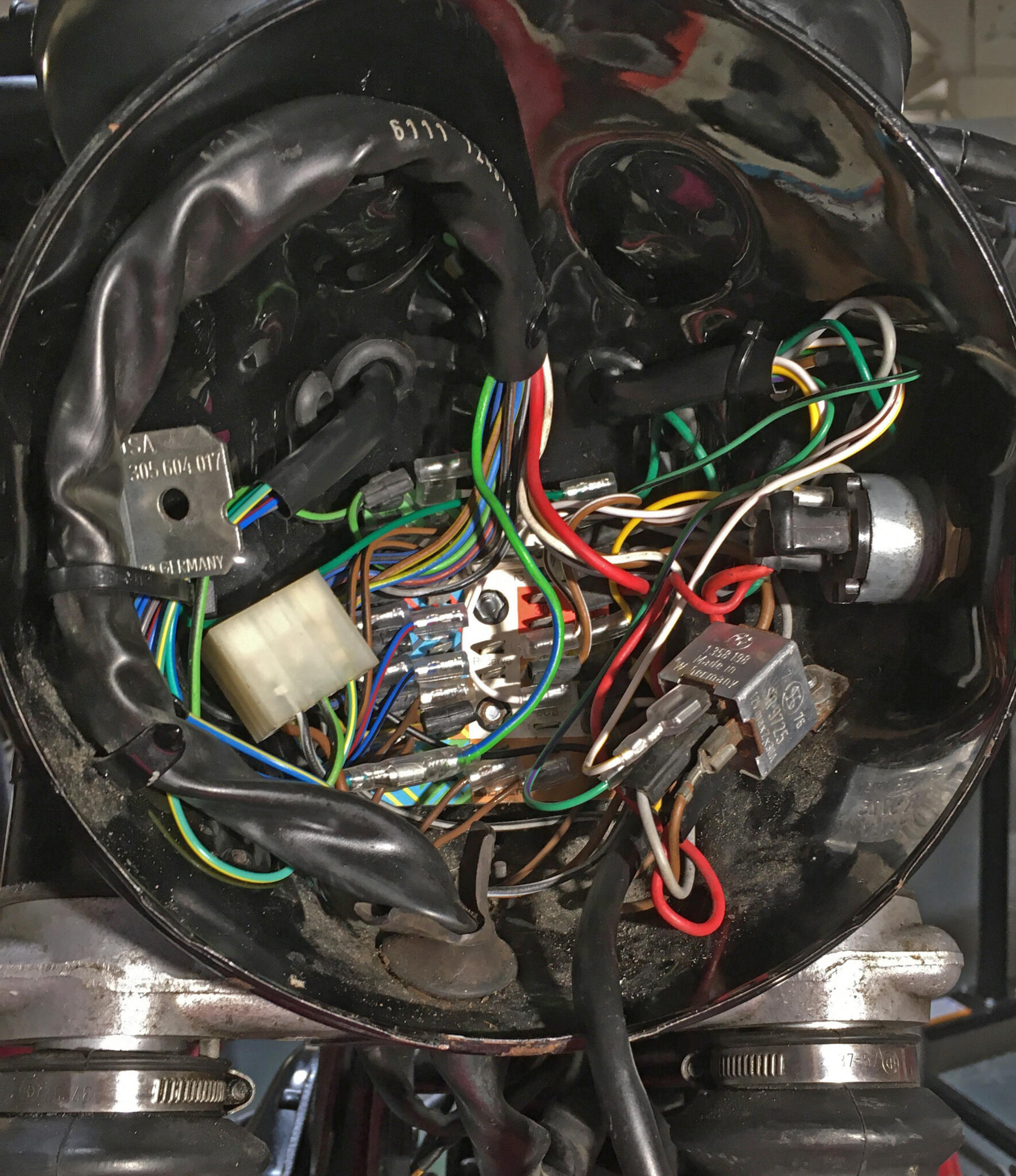Adrian’s BMW R60/7
“Make it work,” said Adrian. “By the way, it’s stood in a shed since 1991.”
My initial thought was that this 1977 R60 needed a new loom. Corrosion and horrible repairs were visible everywhere. But Adrian wanted a runner, not electrical perfection, so I tried repairing the bad bits.
This is actually great fun. Just start at the beginning: locate something hideous, and slowly and patiently sort it out. Then move onto the next bit. On this bike that meant rewiring the main feeds, the starter relay, both handlebar switches, the horn, and the points-assisted Boyer electronic ignition. On these old Boxers the headlight contains most of the electrical connections, so you have to keep things neat.
Once that was done, and a few crossed wires, duff earths and blown bulbs had been sorted out, it was looking quite presentable, and working nicely.
Carb issues meant I couldn’t test the charging system but the engine started willingly – for the first time in 29 years. A satisfying couple of days’ work – and for Adrian less than half the price of a new loom.

When you rewire old switchgear it helps to stop the wires crossing and recrossing each other. It stays more flexible that way. You snip off the ties as you push the sleeve on





